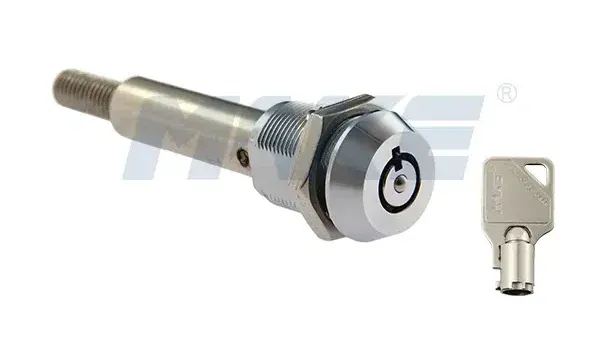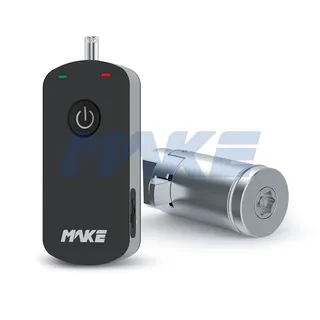The lock cylinder is a fundamental component in the operation of any lock, serving as the central mechanism that directly controls the locking and unlocking process. Its design, construction, and functionality are critical to ensuring the security of doors, cabinets, and other access points. Without a properly designed lock cylinder, even the strongest lock body may fail to provide adequate protection. Essentially, the cylinder acts as the bridge between the key and the lock’s bolt mechanism, translating the key’s movement into action that secures or releases the locking system.
Lock cylinders are found in a wide range of applications, from residential and commercial door locks to specialized systems such as cam locks, vending machine locks, and push locks. They are engineered to provide smooth, reliable operation while also offering resistance to unauthorized manipulation. By interacting with the key and engaging the internal components, the cylinder ensures that only the correct key can operate the lock, making it a critical element in any secure locking solution.

At its core, the lock cylinder functions to control the movement of the lock bolt. When a key is inserted into the cylinder and turned, it rotates the core of the lock, which in turn engages or disengages the bolt. This action allows the lock to either secure a door or grant access. In the case of a mortise lock, the cylinder interacts with the square tongue, transmitting rotation to the inclined tongue that physically moves the locking mechanism. This precise coordination between cylinder and bolt is what ensures the proper operation of the lock.
The design and material quality of the lock cylinder directly influence both the security and efficiency of the locking system. A high-quality cylinder ensures smooth key operation, resists wear over time, and provides protection against forced entry methods such as drilling, picking, or key duplication. Poorly designed or low-quality cylinders can compromise the entire lock, regardless of the strength of the surrounding lock body.
A typical lock cylinder consists of several critical components, each playing a specific role in the locking mechanism. Understanding these parts helps explain how cylinders operate and why certain features enhance security:
The keyway is the slot or groove in the cylinder where the key is inserted. The shape of the keyway corresponds to the specific type of key used, such as a pin tumbler key, wafer key, or disc tumbler key. The unique design of the keyway ensures that only the correct key can enter the cylinder, preventing unauthorized keys from being inserted. Complex keyway profiles can also improve security by making key duplication more difficult.
Tumblers are the internal components that respond to the key. They can be in the form of pins, wafers, or discs depending on the cylinder type. When the correct key is inserted, the tumblers align to allow the cylinder to rotate. Misaligned tumblers prevent rotation, blocking access. Tumblers are therefore the primary elements that determine the precision and security of the cylinder.
The cylinder shell is the outer casing of the lock cylinder. It encases and protects the internal components, maintaining structural integrity and resisting physical attacks. The material of the shell — often brass, steel, or an alloy — affects both the durability and security of the cylinder. A reinforced shell can prevent drilling, snapping, or other forced-entry techniques.
The shear line is the interface between the plug (inner rotating core) and the outer cylinder shell. Proper alignment of the tumblers along the shear line is essential for the cylinder to rotate. This alignment is what makes the cylinder secure: only the correct key can position the tumblers to match the shear line, enabling smooth rotation and operation.
The cam or tailpiece is the connecting component at the rear of the cylinder that transmits rotation to the lock mechanism, such as a bolt or latch. Turning the key rotates the plug, which moves the cam or tailpiece, retracting or extending the locking bolt to secure or release the door.
The operating principle of a lock cylinder is straightforward yet highly effective. When a key is inserted into the keyway, its notches and grooves push the tumblers to precise positions. This positioning aligns all pins (or wafers/discs) with the shear line, allowing the cylinder plug to rotate. The plug’s rotation moves the cam or tailpiece, which in turn retracts or extends the locking bolt.
If an incorrect key is inserted, the tumblers remain misaligned. This prevents the cylinder from rotating, stopping the bolt from moving, and effectively blocking unauthorized access. The uniqueness of each key ensures that a lock cylinder responds only to its specific key, providing security and control over who can access a secured area.
Lock cylinders come in various types to suit different applications and security requirements. Some of the most common types include:
Pin Tumbler Cylinders: These are the most common in residential and commercial locks, using stacked pins to align with the shear line.
Wafer Tumbler Cylinders: Often used in cam locks, mailboxes, and vending machines, wafer tumblers provide moderate security with a compact design.
Disc Tumbler Cylinders: Used in high-security applications, disc tumblers provide resistance against picking and bumping.
High-quality cylinders, such as those provided by MAKE, are constructed with durable, corrosion-resistant materials, making them waterproof and rustproof. Sizes can often be customized to match specific doors or applications, providing flexibility without compromising security.
Modern lock cylinders incorporate several security features to prevent unauthorized access and enhance durability:
Anti-drill protection: Hardened steel inserts resist drilling attacks.
Anti-pick mechanisms: Specially shaped pins or tumblers prevent easy manipulation by traditional picking tools.
Anti-bump design: Cylinders are engineered to resist key bumping techniques.
Weather resistance: Rustproof and waterproof materials ensure reliability in outdoor or humid environments.
Custom key systems: Restricted keyways or patented profiles prevent unauthorized duplication.
By integrating these features, manufacturers like MAKE provide lock cylinders suitable for high-security applications while ensuring smooth operation and longevity.
Lock cylinders are versatile and used in a wide range of locking systems:
Residential doors: Standard pin tumbler cylinders provide reliable home security.
Commercial doors: High-security mortise or modular cylinders protect offices and businesses.
Specialized locks: Cam locks, vending machine locks, push locks, and cabinet locks use wafer or disc tumbler cylinders.
Vehicles: Automotive lock cylinders control ignition, doors, and glove compartments.
Choosing the right cylinder depends on the application, the level of security required, and environmental factors such as exposure to weather or corrosive conditions.
Proper maintenance is essential for lock cylinder performance:
Lubrication: Use graphite or dry lubricant; avoid oil-based sprays that attract dust.
Inspection: Regularly check for wear, corrosion, or loose components.
Replacement: Cylinders that show signs of wear or damage should be replaced to maintain security.
A well-maintained cylinder ensures smooth operation over thousands of key cycles and reduces the risk of malfunction or unauthorized entry.
Manufacturers like MAKE offer a wide range of lock cylinders that can be customized to meet specific requirements. Options include:
Adjustable sizes for different door thicknesses.
Various tumblers (pin, wafer, or disc) for different security levels.
Waterproof and rustproof finishes for outdoor applications.
Compatibility with high-security key systems for commercial or institutional use.
This flexibility allows users to select cylinders that precisely match the security needs and operational requirements of their locks.
The lock cylinder is more than just a mechanical part — it is the heart of any secure locking system. Its interaction with the key, precise internal mechanism, and quality construction determine the overall security and reliability of a lock. Whether in homes, offices, vending machines, or specialized push locks, the cylinder ensures that only authorized users can operate the lock.
High-quality lock cylinders, such as those provided by MAKE, combine durability, anti-tamper features, and customization options to meet a wide range of security needs. By understanding the key components, functionality, and security features of lock cylinders, users can make informed decisions that enhance safety, convenience, and peace of mind.
In today’s world, where security threats continue to evolve, investing in a reliable, well-designed lock cylinder is a critical step toward protecting property, assets, and personal safety.
1 result

